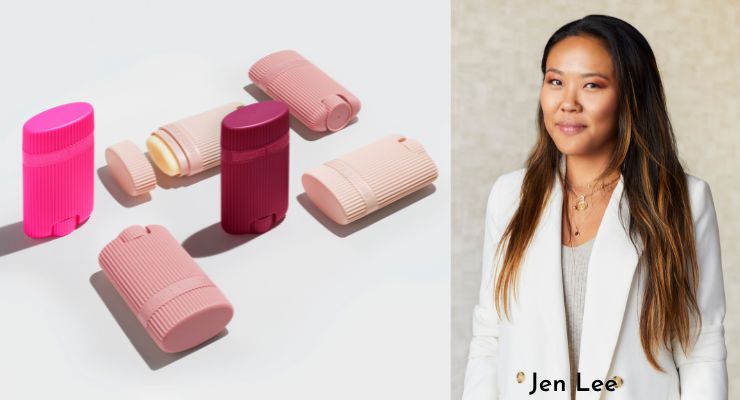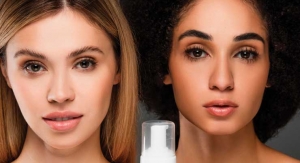Jamie Matusow, Editor-in-Chief05.02.23
Santa Monica-based Beautycounter—and its founder, Gregg Renfrew—are known for their passion for non-toxic clean ingredients as well as for pursuing sustainable packaging for a wide array of cosmetics and personal care. The company started as a D2C brand in 2013, sold via independent consultants, and in addition, is now sold online and in nationwide retailers including Ulta.
From the start, the company focused on ingredient innovation and transparency with numerous “consumer-first” initiatives, including, the introduction of The Never List banning 1,800 “questionable” ingredients, and passing nine pieces of legislation to advance personal care product safety in the U.S.
The Carlyle Group acquired a majority stake in the brand in 2021. Renfrew left the company in early 2023, but Beautycounter continues its sustainable direction. Beauty industry executive Marc Rey (formerly of Shiseido, Coty, YSL Beaute…) serves as CEO.
Recently, Beauty Packaging asked Jen Lee, Chief Impact Officer, Beautycounter, a couple of questions about how she views sustainable packaging now—and where she sees its future growth. Here are her thoughtful responses:
BP: What has been the most significant development or challenge regarding sustainable packaging—and how does it affect product/package development?
Jen Lee: Packaging in the beauty industry is challenging—the packaging industry has made vast improvements over the last few years to be more sustainable, but still has a long way to go! The biggest challenge is ensuring that as much of our packaging as possible makes it to recycling facilities.Many beauty packaging items are not recycled because of their size and mixed materials composition. Less than 14% of plastic is recycled globally, and small beauty products (anything smaller than a yogurt cup) are even less likely to be recycled. This is because the packaging is too small to be caught by the municipal waste facility machines, so they end up going to landfill. This requires us to think differently about how we approach product development and packaging.
Designing for Circularity
Designing for circularity, including refillable, recycled, recyclable packaging, is one of the biggest opportunities to boost sustainability for our brand and the industry overall. At Beautycounter, we are working towards achieving 100% refillable, recyclable, recycled, compostable or reusable packaging by 2025, and we’re already halfway toward this goal.We currently have two refillable products, our Cheeky Clean Cream Blush and The Clean Deo, and we have more in the works. We’ve seen high repeat purchase rates for our refills that serve as evidence that our customers appreciate the refillable concept and are utilizing the circular benefit. By making The Clean Deo refillable, we reduced its water use, fossil fuel use, and greenhouse gas emissions by an estimated 47%. By making the Cheeky Clean Cream Blush available as a refill, we reduced its estimated fossil fuel use and greenhouse gas emissions by 86%.
In the last few years, we’ve invested in packaging materials that are recyclable and more circular in nature such as post-consumer recycled (PCR) resin. PCR plastic is made from recycled plastic items like bottles that have been collected, sorted, cleaned, and processed. Using PCR removes plastic items from the waste stream and gives them another life. Our Life Cycle Assessment (LCA) data indicates that using PCR plastic instead of virgin plastic can decrease estimated fossil fuel use and greenhouse gas emissions and water use.
Beautycounter's 'The Clean Deo' Refillable Deodorant
We launched The Clean Deo in January 2021, a hard-working, aluminum-free deodorant that is in refillable and recyclable packaging. Due to popular demand, we introduced a scent in 2022, Crisp Sequoia, that also features some upgraded packaging materials.Most deodorant packaging is made with mixed materials, which are impossible to recycle. Our Clean Deo packaging is designed with circularity in mind. The packaging is made of mono-material, and the insert can be tossed straight in the recycling bin. After, you can easily snap a refill into the outer packaging.
The refillable packaging and recyclable packaging is composed of approximately 83% post-consumer recycled (PCR) resin. By making The Clean Deo refillable, we reduced its water use, fossil fuel use, and greenhouse gas emissions by an estimated 47%.
BP: What do you predict as far as future challenges or triumphs in sustainable packaging in the beauty industry?
Jen Lee: As sustainable packaging becomes table stakes, we expect there to be increased greenwashing in this space, similar to what we’ve seen with ingredient safety. As with ingredients and formulations, packaging materials and sustainability can be quite nuanced. Sometimes packaging that is presented as sustainable is actually not better for the environment (i.e., paper materials that are completely lined with plastic coating), and it’s vital that there is increased transparency for consumers to discern if the packaging is truly better for the planet.An Increased Need to Screen and Test
We predict that as new materials enter the marketplace of sustainable packaging, there will be an increased need to screen and test the safety and environmental impacts of these materials. It is imperative that sufficient research is done to ensure that unwanted harmful chemicals do not leach from packaging into our clean formulas and impact the quality and safety of our products.Also, it is the core functionality of beauty packaging to protect the integrity of the formula it is storing—making sure the sustainable innovation is able to truly be commercialized and tested is imperative. Safety must extend beyond just the ingredients and formulations of products and also include the packaging materials to maintain high safety and quality standards end to end. This is also why it is important to advocate for regulations that require transparency to consumers with information on sustainability and material claims.



















